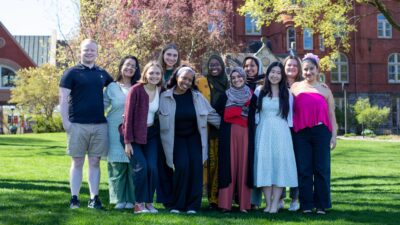When history professor Jess Pearson asked students what they wanted in a history course, she heard a consistent refrain: they wanted an internship component. That was new territory for Pearson, a French historian, but the department had recently created a public and digital history track and she’d been thinking a lot about the intersection of public history and internationalism. A syllabus began to take shape for what became “History in Action.” “It’s totally outside anything I’ve ever done in a class,” she says.
Pearson started with eight weeks focused on texts. After that, the 12 students embarked on a one-credit internship at five community organizations (East Side Freedom Library, Cedar Cultural Center, Preserve Minneapolis, Rondo Avenue Incorporated, and Norway House), where they served as history consultants and took on research projects. “Being able to connect with a Twin Cities organization brought the course topics out of the realm of the abstract,” says Christina Feng ’20 (Hastings on Hudson, N.Y.), who interned at the East Side Freedom Library. “It made it impossible to ignore the practicalities of the work we were doing.”
Finally, the class conducted research in the college’s archives and drafted final papers—and then turned those papers into a public-facing exhibit in the Mac’s library. Students chose artifacts, installed the exhibit, and created an exhibit guide. At semester’s end, they hosted an opening for their “Internationalism @ Mac” exhibit, with topics including Vietnam War protests on campus, Model UN, and Mac’s relationship with Clan Macalister of Scotland.
“We’re trying to understand how the world has changed over time,” Pearson says. “We’re getting deep into sources, teaching students how to write for a broader, more general audience. How do you put history out there for a variety of audiences?”
November 5 2019
Back to top




